HST-Sun Transit Dry Run;
Neptune & Uranus Moons, M31 Exposure Tests
Posted: 20 October 2016
|
Open: Wednesday, 19 October 2016, 1412 MST Temperature: 104°F |
Session: 1026 Conditions: Clear |
Equipment Used:
12" f/8 LX600 w/StarLock
Wireless AutoStar II handset
2" 24mm UWA eyepiece
Solar Filter
Camera:
D7200 DSLR
Received an alert from CalSky of the transit of the Sun by the Hubble Space Telescope (HST) to take place Thursday afternoon, 20 October 2016. Went to the observatory Wednesday afternoon to do a dry run imaging session.
1420 MST: LX600 ON, StarLock OFF, High Precision OFF. Attached the Thousand Oaks Optical Solar Filter on the 12" telescope. Then used the "Sun as Asteroid" to GOTO the Sun. Three small sunspots were visible, 102X.
Mounted the D7200 DSLR at prime focus and did some still and video exposures as a test for the actual HST-Sun transit. This is a 1/400sec, ISO 400, exposure of a portion of the Sun where the HST will pass and showing the sunspots (left):
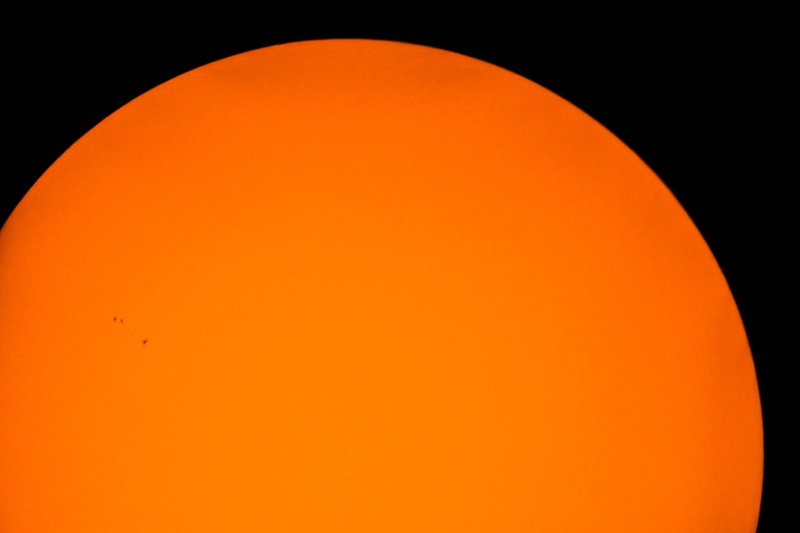
1445 MST: ended imaging tests. 1449 MST: LX600 OFF.
|
Close: Wednesday, 19 October 2016, 1457 MST Temperature: 96°F |
Session Length: 0h 45m Conditions: Clear |
|
Open: Wednesday, 19 October 2016, 1947 MST Temperature: 74°F |
Session: 1027 Conditions: Clear |
Equipment Used:
12" f/8 LX600 w/StarLock
Wireless AutoStar II handset
2" 24mm UWA eyepiece
Camera:
D7200 DSLR
After re-opening the observatory on Wednesday, the 12" telescope was powered on at 1951 MST. StarLock and High Precision were turned OFF.
1953 MST: briefly viewed Neptune, 102X, and then began setting up to image Neptune and its moon Triton. The D7200 DSLR was mounted at prime focus.
2003 MST: took this 10 seconds, ISO 6400, image of Neptune and its moon Triton:
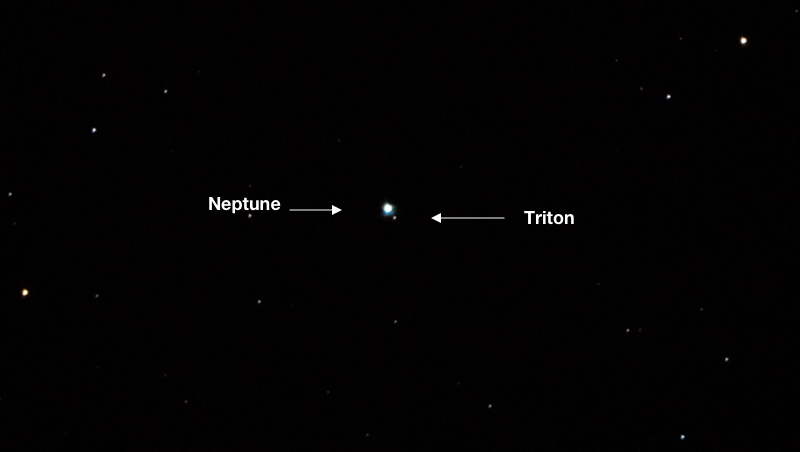
Click or tap on image for animated version
The animated version made from exposures on 18 and 19 October (click/tap on image above) shows Neptune's motion against the background stars in about 24 hours. The changing position of Triton is also evident.
2023 MST: slewed to Uranus and took this 10 seconds, ISO 6400, image of Uranus and several of its moons:
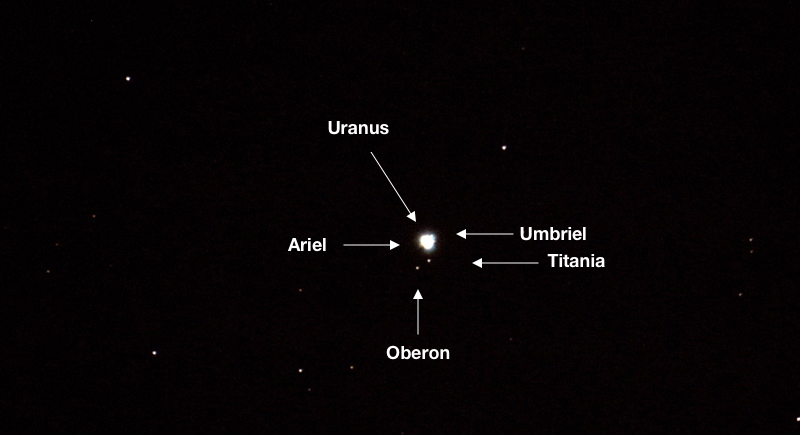
Click or tap on image for animated version
The movement of the planet and moons against the background stars are obvious over the 24 hour period when viewing the animated version made from exposures on 18 and 19 October.
2026 MST: added the Optec focal reducer and began preparing to do some exposure tests using the Andromeda Galaxy (M31). High Precision was left OFF but StarLock was ON for autoguiding during the exposures. First, I did five 1 minute, ISO 3200, exposures, White Balance 4000K. Here are unedited and edited versions of a single 1 minute, ISO 3200, exposure:
Unedited, 1 minute, ISO 3200
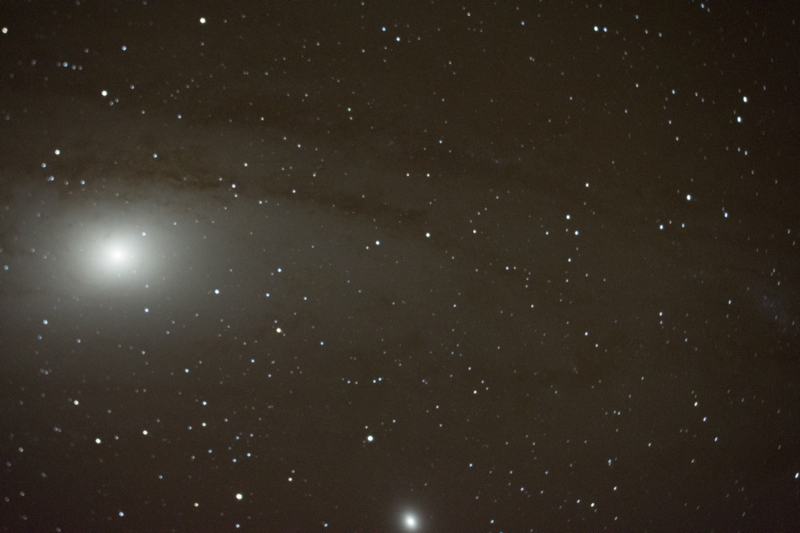
Edited, 1 minute, ISO 3200
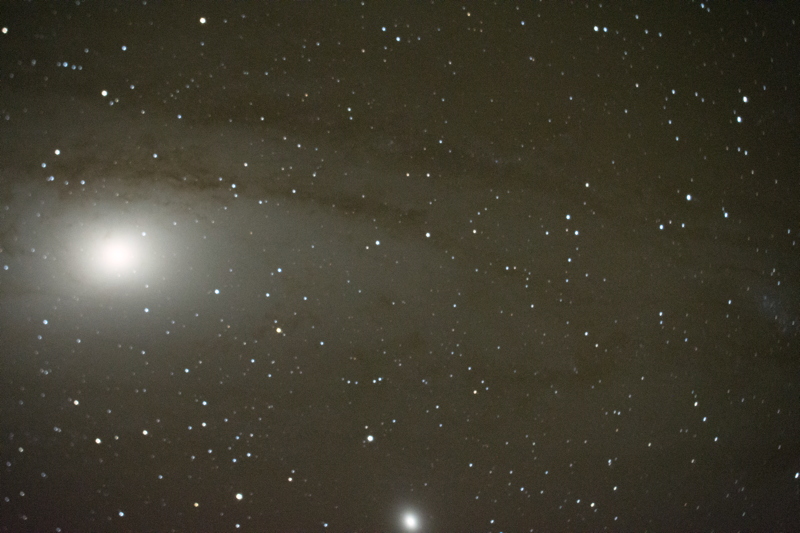
The five 1 minute exposures were stacked using Lynkeos. Here are the resulting images, unedited and edited:
Unedited, stacked (5), 1 minute, ISO 3200
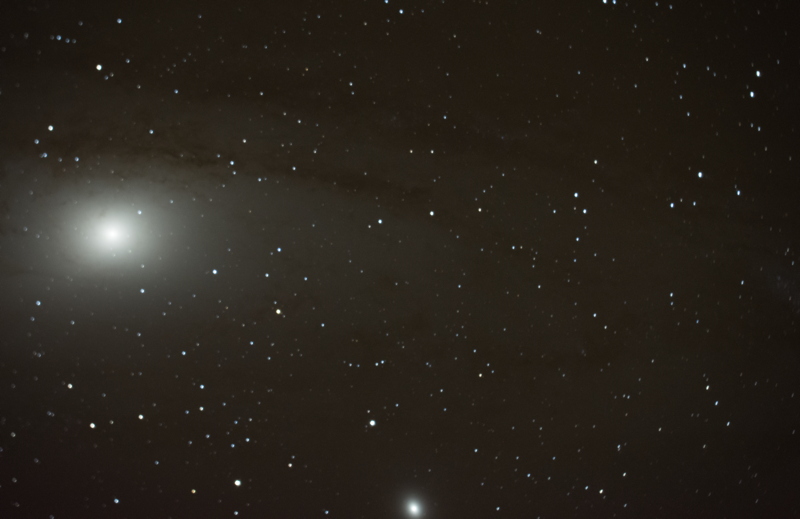
Edited, stacked (5), 1 minute, ISO 3200
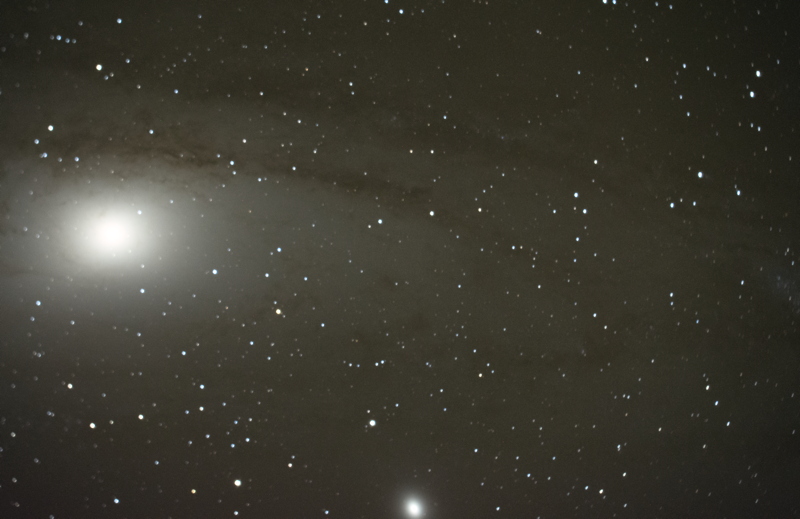
For comparison to the stacked images I took a 5 minute, ISO 3200, WB 4000K, exposure. This is an edited version:
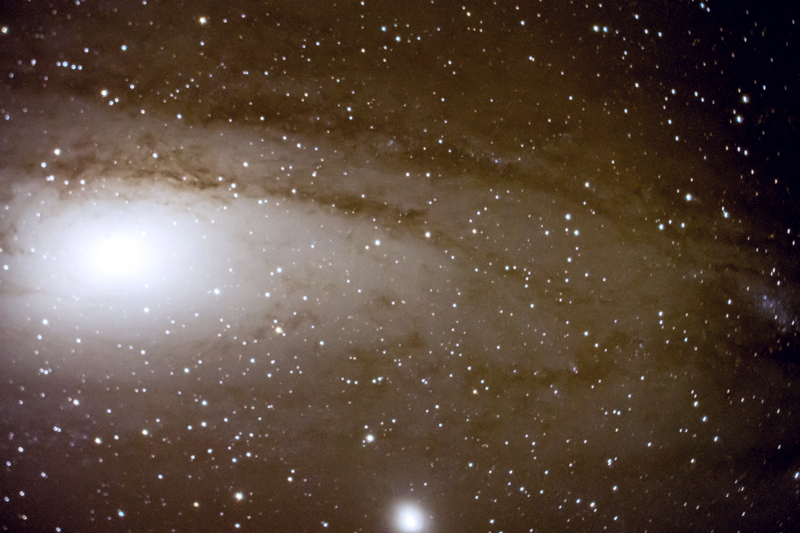
The most obvious difference, besides the color (which I could have corrected), is that the stacked version (effective 5 minute exposure) shows less noise. However, the stacked version does not show NGC206 (star association at the right) prominently whereas the 5 minute exposure does. The companion galaxy M32 (bottom) shows up well though in all the images.
I also took a 5 minute, ISO 5000, WB 4000K, exposure, edited:
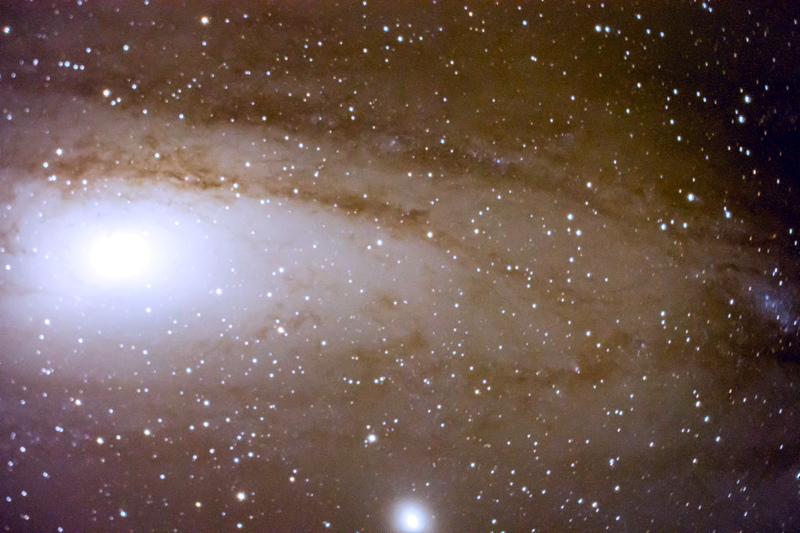
All things considered, I prefer longer higher ISO exposures to shorter exposures that could be stacked.
2114 MST: ended the exposure tests due to the brightening sky from the rising waning gibbous Moon.
|
Close: Wednesday, 19 October 2016, 2125 MST Temperature: 67°F |
Session Length: 1h 47m Conditions: Clear |
Comments are welcome using Email. Twitter users can use the button below to tweet this report to your followers. Thanks.
Cassiopeia Observatory Home Page
Copyright ©2016 Michael L. Weasner / mweasner@me.com
URL = http://www.weasner.com/co/Reports/2016/10/20/index.html
